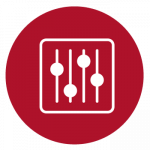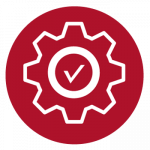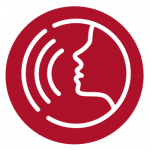Building Next-Generation Workforce Management: A Definitive Guide
Evolving WFM challenges demand new solutions
For contact center leaders, the pressures to maintain service levels and drive efficiency—while dealing with high turnover—remain constant. But as organizations in every category grow hyperfocused on the customer experience, the contact center increasingly finds itself in the spotlight, amplifying these pressures. To rise to the challenge, contact center leaders are looking for smart workforce management (WFM) tools that enable them to get more out of their agents in terms of efficiency and performance and more tools for themselves to add more strategic value to the business.
But with a crowded WFM market filled with seemingly similar products, what does next-generation WFM really look like?
This buyer’s guide focuses on core capabilities, emerging best practices and other tips for selecting a forward-thinking WFM
solution that delivers immediate results—and long-term value.
Mounting WFM Pressures for the Contact Center
The Pressures
The surge in intelligent automation, new analytics engines, and artificial intelligence (AI) and machine learning (ML) driven tools promises to deliver dramatic new efficiencies in the contact center.
A growing body of research shows that increasing agent engagement and job satisfaction directly improves the customer experience—and reduces turnover for both agents and customers.
Key Questions
Where Do These Emerging Technologies Fit in your Contact Center?
- AI, ML and other intelligent automation can complement and enhance—not replace—human agents to drive more intuitive and personalized customer experiences.
- Contact centers need embedded automation and intelligent tools—not bolt-on products—to seamlessly incorporate smart technology in WFM workflows.
What’s the Secret Ingredient to Agent Engagement?
- Agents crave feedback. Giving agents robust, immediate performance feedback keeps them invested in their role and motivated to improve.
- Flexibility—not money—is the biggest factor in agent satisfaction. Giving agents control over their schedules and their responsibilities goes further than a raise or a bonus.
Achieving an Elevated Approach to WFM
As contact centers respond to rising pressures and new demands, they’re looking for smart solutions that enable them to achieve two key goals:
Optimized scheduling:
Putting the right people in the right place at the right time to ensure and improve service levels.
Increased agent engagement:
Giving agents the tools and feedback they need to feel invested in their roles.
Improved agent performance:
Leveraging performance metrics, benchmarking and gamification to boost agent performance.
Streamlined workflows:
Adding automation to reduce tedious workflows and free more time to focus on value-added work.
More accurate planning:
Leveraging greater visibility and predictive forecasting to enable smarter scheduling, staffing and budget planning decisions.
Better reporting:
Using robust data aggregation and visualization tools to connect contact center performance with measurable business value.
The Problem: Identifying the Right WFM Solution
So, how do you choose a solution to meet your goals today—and one that gives you the flexible framework to adapt as new demands emerge? Every WFM solution on the market today offers basic scheduling functionality to keep your contact center running at the status quo. What are the leading-edge capabilities and emerging functionalities that you’ll need to take WFM to the next level?
This Guide Helps You Answer Those Questions, Focusing on Three Sets of Criteria:
-
Core WFM Capabilities
The foundational qualities to seek out in any WFM solution.
-
Emerging WFM Best Practices
Leading-edge functionalities that drive new best practices.
-
Finding a Partner vs. a Vendor
Maximizing the value of your investment by choosing a solutions provider that takes a partnership approach.
Core Capabilities of Next-Gen WFM
Easy, Fast Deployment
One of the first questions to ask a WFM solution provider is, “How long will it take to get up and running?” Deploying a WFM solution should be a matter of weeks—not months. It’s also important to ask about implementation services, because you shouldn’t end up with huge bills for additional consulting just to install the product. Look for expert guidance and implementation services that are fully included in the contract.
True Flexibility
Cloud-based solutions are no longer novel—they’re the standard. As such, your WFM solution should give you full flexibility in choosing a deployment model: cloud, on-premises or a hybrid deployment to fit unique needs. And that flexibility shouldn’t require you to make tradeoffs. If you choose a cloud deployment, you should expect full functionality. If you choose to deploy on-premises, you should expect the same level of scalability that the cloud can offer.
True Scalability
Most solutions touting scalability focus on scaling up. But best-in-class WFM solutions let you scale up and down in near real time. True scalability ensures you’re ready for rapid growth—and able to handle seasonal swings. Look for this two-way scalability and simplified licensing that ensures you only pay for what you need.
Self-Service Customizability
No two contact centers look exactly alike, so there’s no such thing as a one-size-fits-all WFM solution. That means customization is typically unavoidable. Almost every WFM solution on the market can be customized, but the complex nature of the software makes it difficult to personalize to the contact center business requirements. Ideal solutions will include self service customizability as part of the design framework. This makes it easy for any user—regardless of technical background—to make important customizations—without costly expert assistance.
Rapid Learning Curve
Across all contact centers, a WFM analyst remains a high-turnover role, with high training costs amplifying the hurt of turnover. Leading WFM solutions are easing that pain by making training significantly faster. This allows a new WFM analyst to complete basic training in hours—not days—and begin contributing after just a half-day of training.
Easy Updates & Upgrades
Cloud-based WFM solutions make updates and upgrades seamless and automatic. New features and security patches are added as soon as they’re available, keeping your system state-of-the-art at all times. And because a tool is only valuable if you know how to use it, consider WFM solution providers who also provide guidance and training on new features. These value-added services should be built into the contract—not added cost.
“70% of surveyed organizations who selected Calabrio over Aspect increased the productivity of their contact center by 10-20% or more after deploying Calabrio software.”
Emerging WFM Best Practices
The WFM world continues to see rapid progress in what technology allows contact centers to do—from transforming daily workflows to enhancing long term strategy. So, what are innovative and forward-thinking contact centers actually doing with their WFM tools? Here are five ways to leverage best-in class WFM capabilities to unlock new best practices that drive contact center performance.
Honing Ideal Schedules with Rapid Custom Scheduling
Leading contact centers are using rapid scheduling capabilities to create ideal schedules and accommodate changes. New rapid scheduling capabilities enable you to generate custom schedule requests with multiple custom parameters—in a few seconds, with a few clicks. This gives WFM analysts hours of time back and frees them to tweak parameters to further optimize schedules and drive WFM efficiencies.
Using Predictive Forecasting to Build More Accurate Long-Term Plans
It takes time for WFM analysts to learn the unique patterns in contact volume—the daily and seasonal ebbs and flows. Moreover, these patterns are shifting faster than ever, with emergent issues driving one-off trends that break the mold. WFM solutions now leverage advanced ML and AI tools to predict those shifting patterns and emerging trends. By pulling together data streams from across the contact center—and even across the entire organization—these intelligent tools identify new and surprising connections to better anticipate changes. With these tools at their side, WFM analysts are confidently aligning staffing levels with predicted volume—from building more accurate seasonal forecasts to predicting intra-month surges.
Using Intraday Dynamic Scheduling Tools to Adapt to the Unexpected in Real Time
Today’s AI tools are smarter and more reliable than ever. But they can’t predict everything—weather-related issues, product quality problems, service outages, etc. When the unpredictable impacts service levels, new intraday dynamic scheduling tools can adjust agent schedules in real time. These dynamic scheduling tools instantly optimize agent lunches and breaks to better align with shifts in predicted call volume. They also enable WFM analysts to easily open up overtime opportunities to meet surging volume—and to offer voluntary time-off (VTO) during unexpected slow periods, because overstaffing can be almost as costly as understaffing.
Streamlining Approvals with Simple Automation
Approvals tend to take up a disproportionate amount of time for contact center managers and WFM analysts. Not only is this work tedious, it can create bottlenecks as you build long-term schedules or adjust schedules to accommodate unexpected volume. Best-in-class WFM solutions now make it easier than ever to build user-generated auto-approval workflows. While the traditional auto-approval workflow requires a complex chain of individual criteria, new WFM tools enable you to link multiple criteria in a single, intuitive, end-to-end workflow. This greatly reduces the daily burden of simple approvals, giving WFM analysts a more accurate real-time view of scheduling—and giving contact center leaders more time to focus on more complex activities.
Enabling Agent-Empowered Scheduling
As the contact center world works to crack the agent engagement code, one factor has been proven to deliver big impact at a very small cost: giving agents greater flexibility and control. Innovative contact centers are using new WFM tools that give agents the ability to select their own availability and control their own schedules. Best-in-class WFM tools are smart enough to automatically account for agent availability and future time off when creating full schedules. Dynamic scheduling tools add further agent empowerment, allowing agents to grab extra overtime hours to earn extra money—or enjoy some VTO. And leading WFM solutions bring all this to life in a mobile-friendly, self-service platform. Agents can manage their schedules anytime, anywhere and from any device, inspiring a more active, engaged role in their careers.
“60% of surveyed organizations who selected Calabrio over Aspect have improved contact center efficiency since deploying their Calabrio software.”
Finding a Partner vs. a Vendor
Look at any software solution provider’s marketing language and you’re sure to see the word “partner” more than a few times. So, what’s the difference between a vendor and a partner? In the simplest sense, a vendor sells you something that helps you achieve an outcome; a partner works with you to help you achieve that outcome.
The difference isn’t just service—it’s the approach to service. Many vendors offer the same “help” in achieving your goals. They just charge a premium for it—generating big revenue. In contrast, a true partnership approach aligns the success of the vendor with the success of the customer. As a result, a true partner is focused on doing everything they can to ensure your organization’s success. A partner considers expert guidance, consultation and professional services as part of the solution they’re offering—added value without added fees.
In-House Expertise
Consultative expertise drives the true partnership approach. But vendors face familiar pressures to drive cost-efficiencies—and many pursue a familiar strategy: outsourcing their customer service and professional services. This strategy should leave you with questions about the depth of product knowledge from these third-party “experts.” Moreover, by keeping all expertise and service in house, a true partner maintains a direct connection between your team and the in-house experts—helping to drive efficient communication and effective solutions.
VOC-Driven Product Development
Contact center leaders know the value of the voice of the customer (VOC). In fact, most successful organizations today are adopting a customer-centric approach that lets the VOC guide business decision-making. You should expect the same from your WFM solutions partner. Look for a partner that actively seeks customer feedback—from all customers, not just the big-name or big-ticket ones—to constantly improve their WFM tools. Look for a demonstrated record of VOC-led product development. This customer-fueled innovation gives you confidence in your WFM investment, knowing that your biggest pain points will rapidly be turned into new features and functionalities.
Clear & Confident Product Roadmap
Making an investment in a WFM solution is a major undertaking—and you should feel confident in the long-term viability of the toolset. The first thing to look for is a simple product portfolio: no confusing matrix of features and functionalities; no redundant offerings (the hallmark of a portfolio built through disjointed mergers and acquisitions). Second, look for a demonstrated commitment to investing in product development. There should be no risk of your WFM solution stalling or getting phased out. Digging into a vendor’s product roadmap can give you the confidence you need to make a future-proof and protected investment.
“Calabrio has been a big benefit for our customers and employees.”
Realizing the Promise of Next-Generation WFM
As contact centers face evolving challenges and increasing demands, rapid innovation in WFM technology promises to rise to the occasion and help achieve an elevated approach to WFM. But with a crowded marketplace, perhaps the greatest challenge is making smart investments in WFM tools and technologies that can truly deliver on this promise. The good news is that the right tools and solutions are out there—and they really can revolutionize the way your contact center operates. By following the tips offered in this guide, you can ensure your WFM solution has the core functionality to let you hit the ground running and realize value quickly. You can seek out the leading-edge tools that are driving transformational WFM best practices in some of the most innovative contact centers. And you can find a true WFM solutions partner to help you maximize the value of those tools and achieve the outcomes that matter most for your business.















